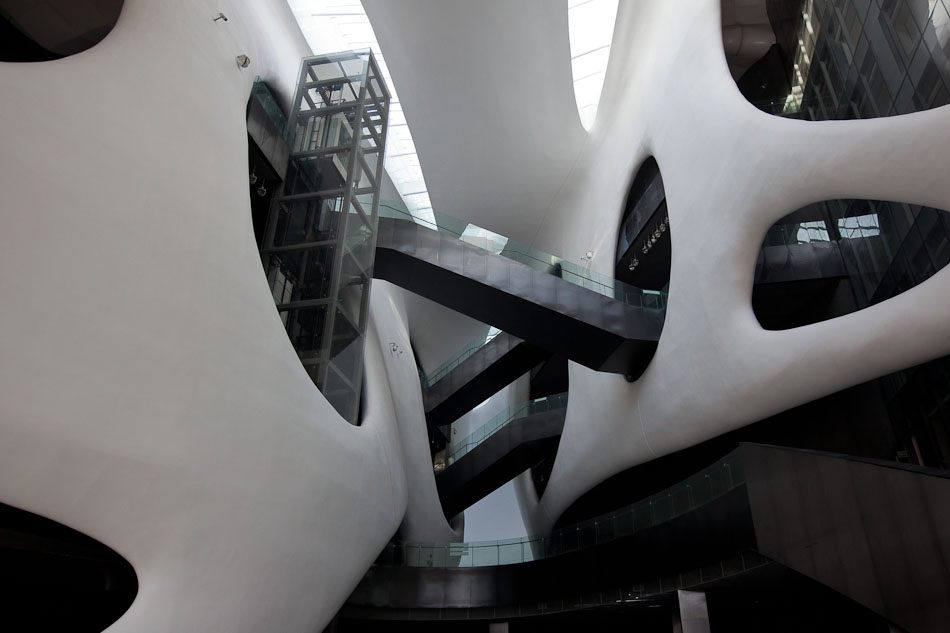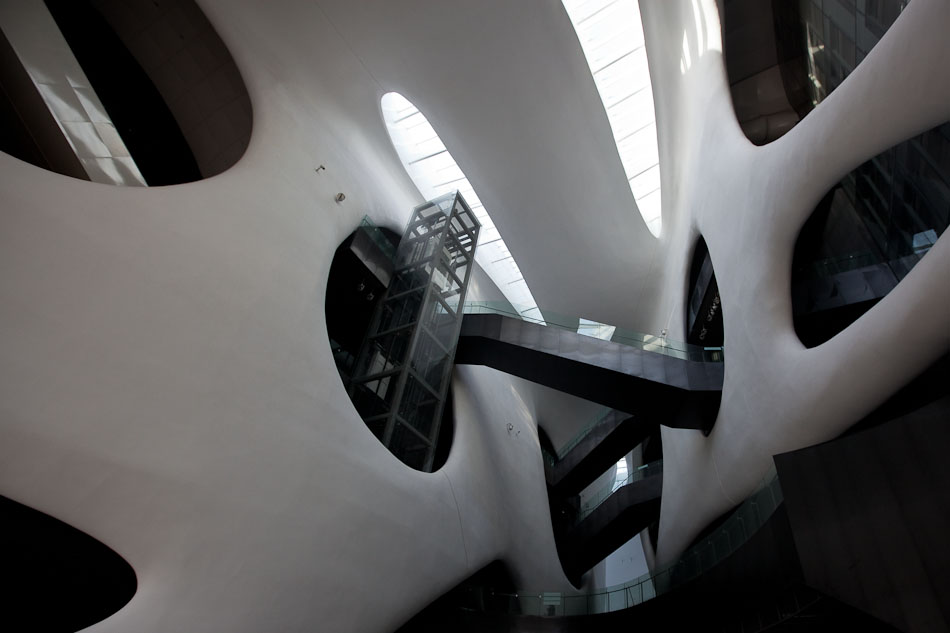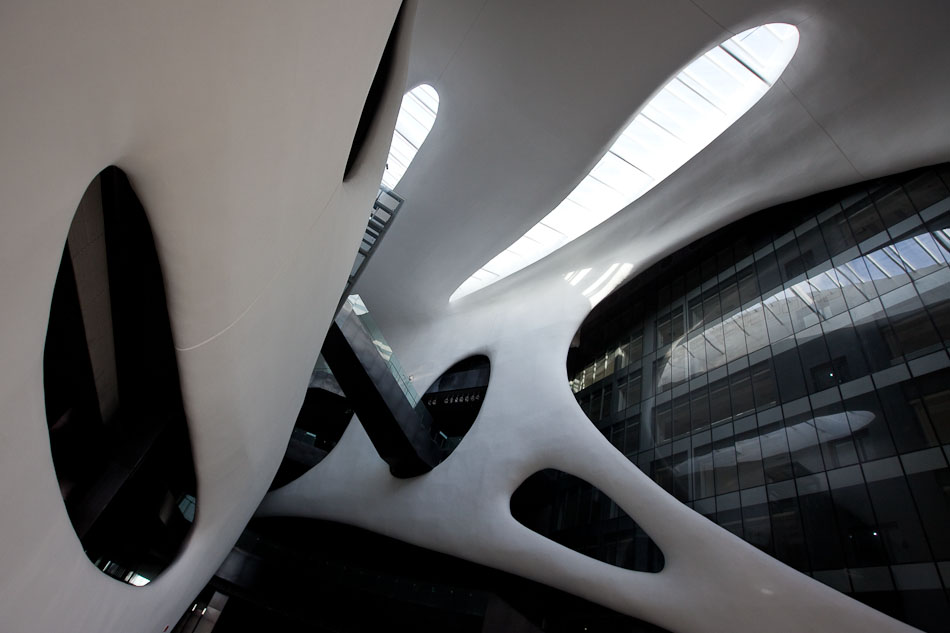Oct 25, 2012 | Architecture, Clippings, Counterfeit Paradises, Development
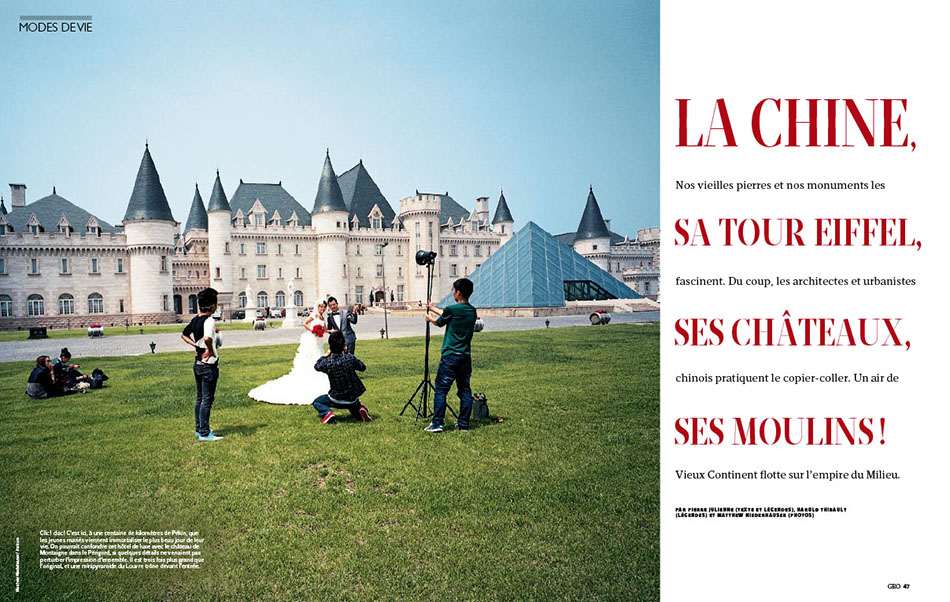
My Counterfeit Paradises series made made a strong appearance in GEO France this summer. Fourteen pages of shanzhai awesomeness. The magazine commissioned me to shoot all of my favorite ersatz European developments around China. This is only part of the Counterfeit Paradises oeuvre as China’s grand development strategies continue to spread at an unrelenting pace. The series explores the cracks in “harmonious” cities coming into being throughout China, as well as sites of leisure and luxury now enjoyed by the urban elite. This nouveau riche partake in an imagined space of contentment and growth even as a gap widens between the promising rhetoric espoused by municipal governments regarding urban planning and actual implementation. This fantastical future plays out in many spaces including newfangled urban districts, cultural institutions, amusement parks, and themed residential developments. In practice, many remain underused, fanciful but alien terrains. Most of the hopes and dreams woven into this urban fabric remain false in nature. These are only a smattering of the many Counterfeit Paradises in China.
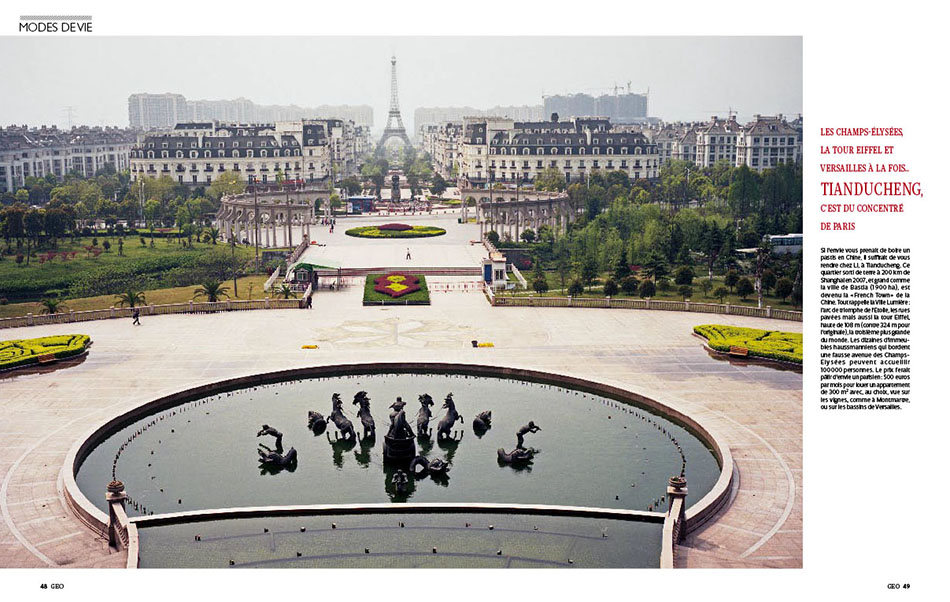


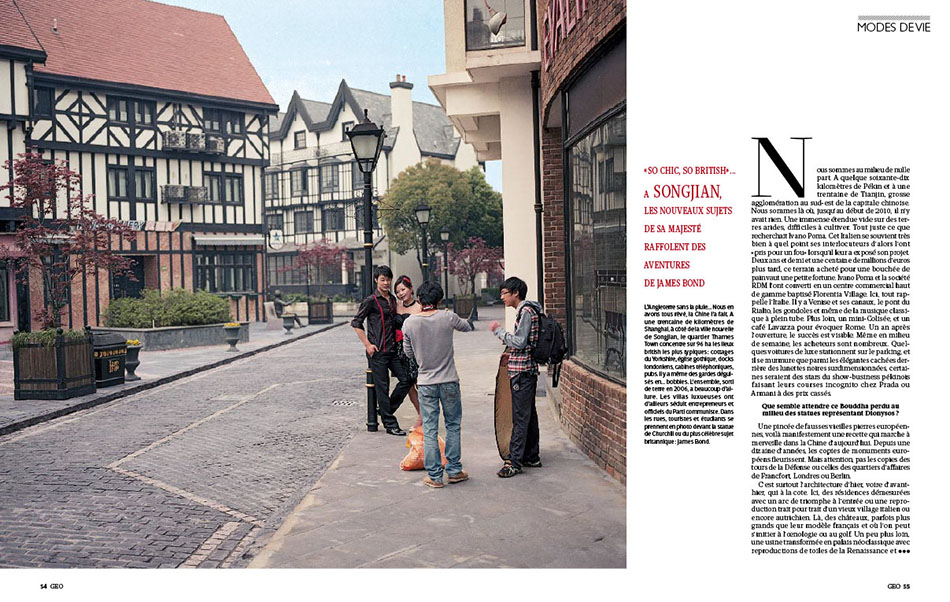

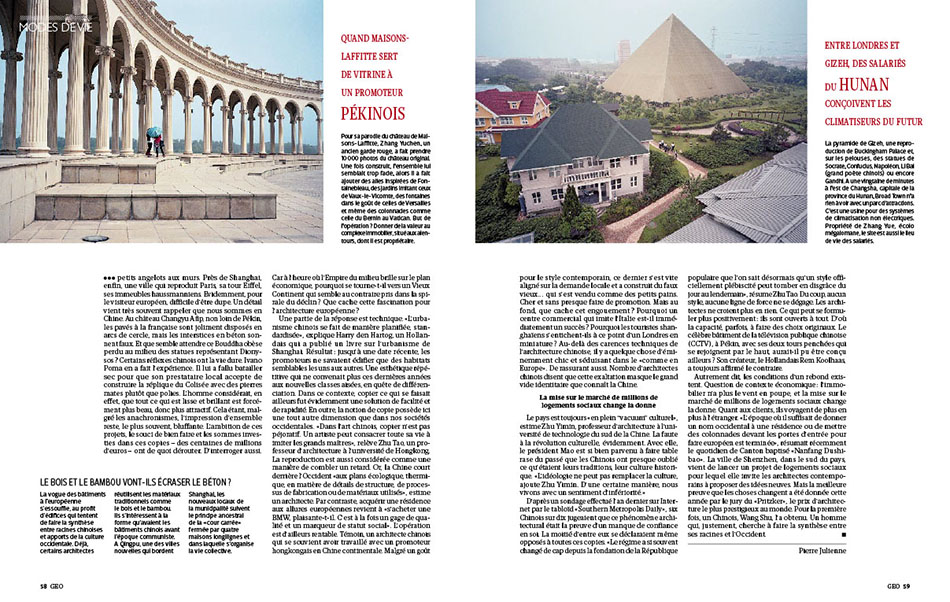
Aug 27, 2012 | Clippings, Development, Urban, Visions of Modernity

Foreign Policy’s current issue on urban development focuses almost exclusively on China. Relying on research by the McKinsey Global Institute, the magazine delves into the 75 fastest developing metropolises on the planet, 29 of which are in China (Shanghai and Beijing top the list, respectively). It is well worth perusing the actual magazine, which features photographs from my Visions of Modernity project, and delves into the serious ramifications of China’s ambitious infrastructure projects. Many of these unprecedented developmental efforts appear more and more misguided. My panorama of clustered residential developments surrounding the Huilongguan subway stop in northern Beijing, seen above, accompanies a piece entitled Weapons of Mass Urban Destruction. The article investigates many of the issues I explore in Visions of Modernity, the foremost being the unsustainable nature of urban planning in China and how it effects consumer, transportation and leisure habits.
The Foreign Policy website also features a series from Visions of Modernity where I documented Ikea customers in Beijing who partake in leisurely afternoons settling into faux showrooms scattered throughout the store. Each photograph suspends the shoppers in their appropriated Ikea environments, as if they were in their own homes. Such nascent nesting and consumer habits are catalyzed by the proliferation of individualized apartments in towering residential developments. These are known as megablocks and have become the cornerstone of Chinese urban planning. The monotonous and imposing structures dominate metropolises across China, forming urban islands that extinguish any sense of fluidity within cities. Although Foreign Policy delves into transportation and architectural projects that give some cause for optimism, such stratagems simply don’t exist on a scale to keep up with the massive urban migration China is experiencing and the concomitant demands on natural resources and energy. In many ways, I must agree with Ai Weiwei’s dark assessment of the plight of China’s cities. It can all seem very bleak. More panoramas of Beijing from Visions of Modernity are below.



May 23, 2012 | Architecture, Clippings, Development, Portraits, Urban
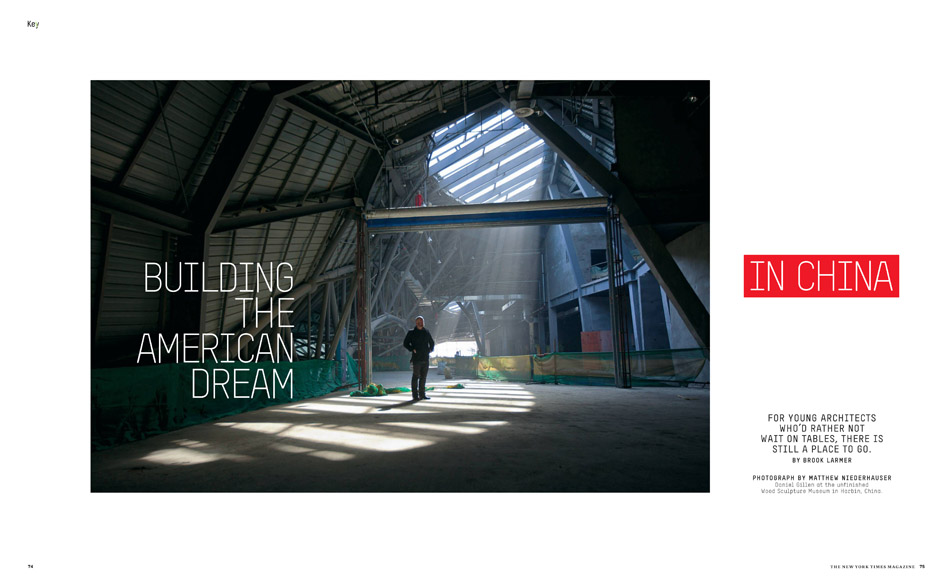
I finally got an opportunity to shoot for The New York Times Magazine. They sent me to Harbin with Daniel Gillen, a young American architect who transplanted to Beijing to ride the wave of audacious infrastructure projects being built across China. He currently works for MAD, founded by Ma Yansong and one of the leading domestic firms in China. Over the past few years MAD was tapped to build a number of cultural centers and museums in their consistently curvilinear style, including the recently completed Ordos Museum and the China Wood Sculpture Museum that I photographed in Harbin. Unfortunately these grand architectural flourishes are usually just showpieces in much larger megablock developments – a small nod to innovation amongst a greater sea of mundane urbanity. Whether or not they actually see any use is still in question. In an ideal world they will become centers of creativity, but in the meantime, Daniel Gillen is only there to build them.
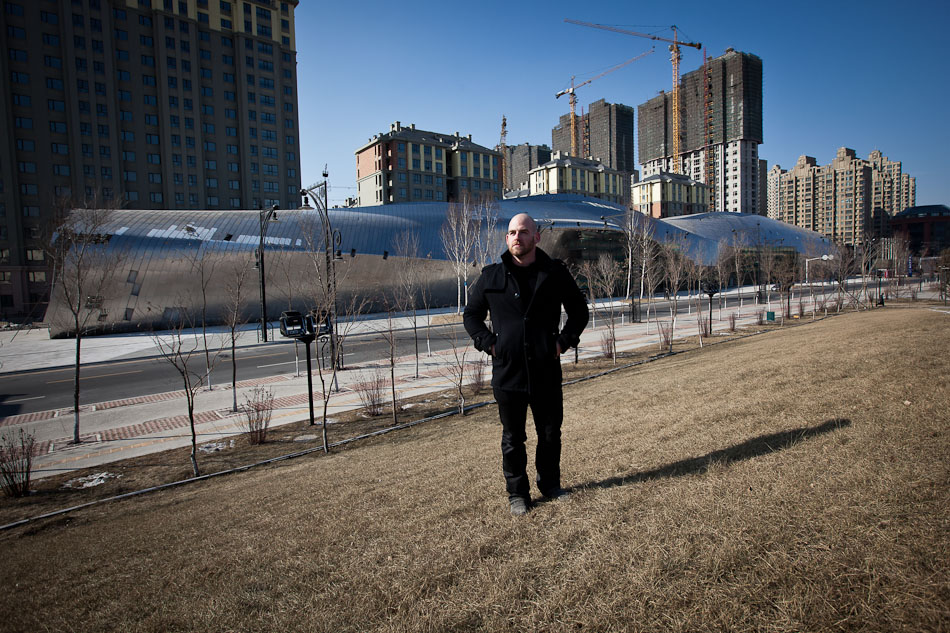

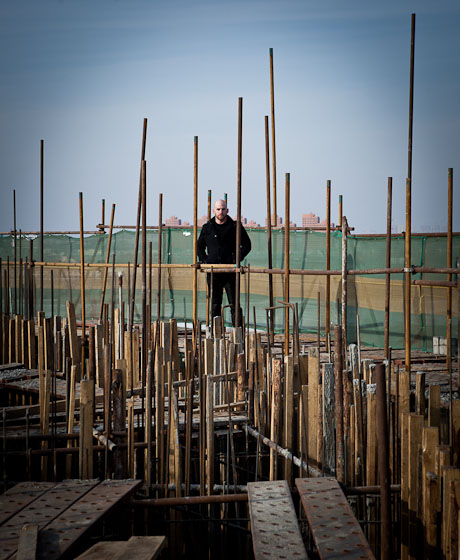


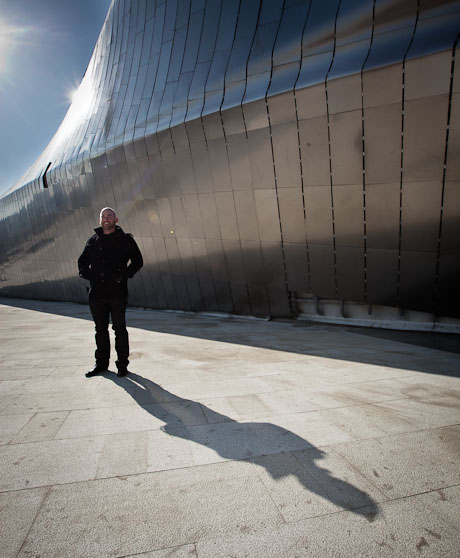
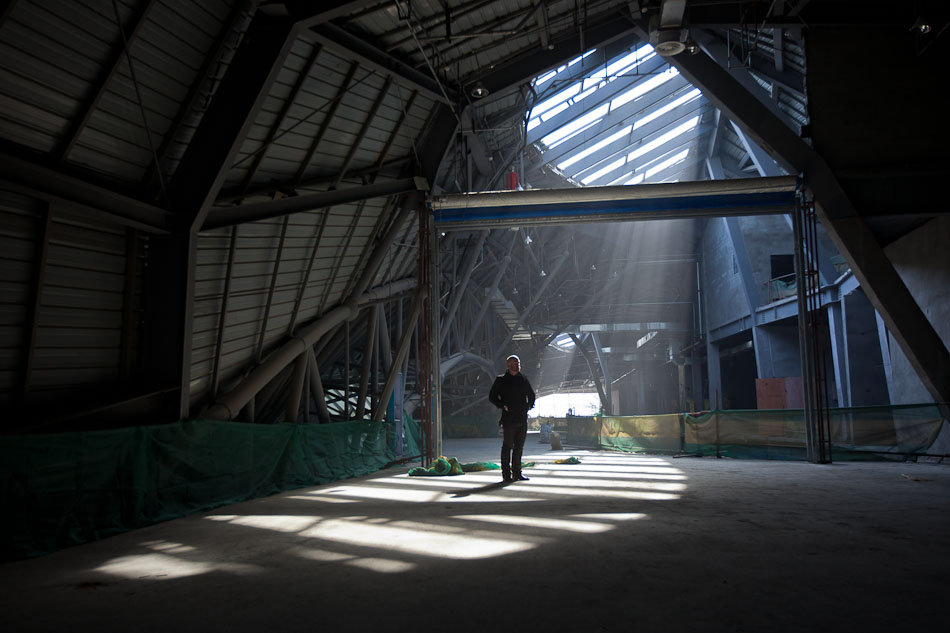
Apr 27, 2012 | Clippings, Portraits
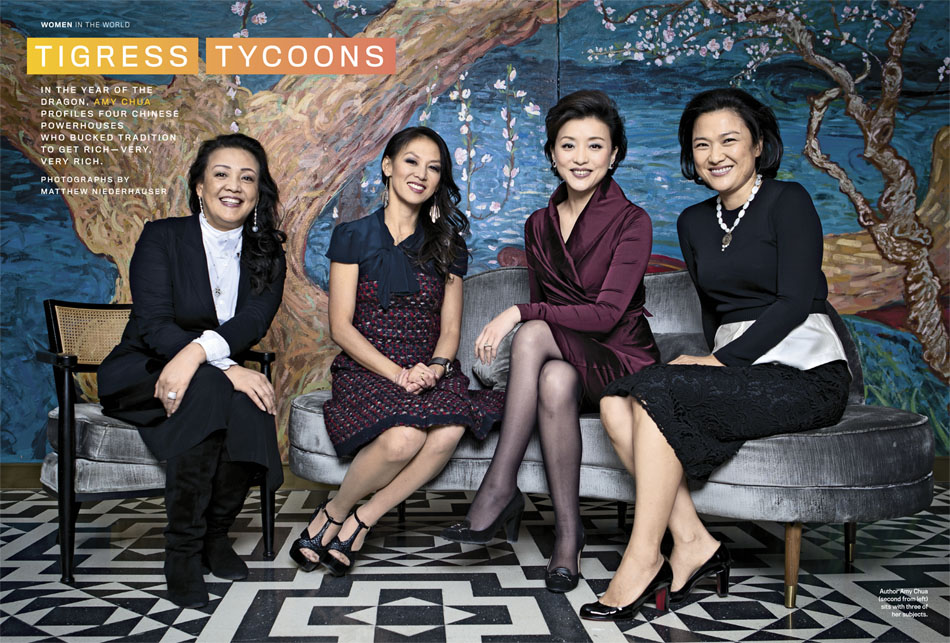
This was one of my most intimidating assignments to date: a portrait of three of the richest females in China along with Amy Chua, the author of Battle Hymn of the Tiger Mother, in less than ten minutes before their power dinner. It really was a Tigress Tycoons showdown. The leader of the streak, in my eyes, was Zhang Xin/张欣 (far right). Her company, SOHO China, is easily one of the top real estate developers in China, building some of the most daring (and sometimes dastardly) megablocks in the country. These properties reshaped Beijing’s skyline and netted her about $2.7 billion. Forbes and the Financial Times consistently list Zhang Xin as a top businesswomen in Asia. Her biography is also staggering. She saved up money working in Hong Kong garment sweatshops before moving to England to study at Cambridge and on to New York City to work at Goldman Sachs. Amazing. Next to Zhang Xin is Yang Lan/杨澜, also know as the “Oprah of China” thanks to her massive television presence and media empire. While not a rags to riches story like Zhang Xin, Yang Lan hit it big on Chinese domestic television, sometimes garnering viewing audiences in the hundreds of millions. She was one of the first talk show hosts in mainland China who really spoke her mind and cofounded Sun Television Cybernetworks.
Last and certainly not least of the Tigress Tycoons is Zhang Yan/张兰 (far left). She founded the popular South Beauty restaurants with now boasts over forty locations throughout the country. Known for their opulent settings, they also serve up extremely tasty Sichuan fair. Zhang Yan completed the female power trifecta. Amy Chua is nothing to scoff at of course, but fits into a different category with her academic and literary accolades. Her book promoting the “Tiger Mother” parenting method sent waves around the world, especially in mainland China. There is even now an “Eagle Dad” spinoff category. Anyway, it was a bit tense at first getting all the ladies together, but thanks to the antics of Zhang Xin’s husband, Pan Shiyi, who decided to take photos along with me, the ten minutes passed without a hitch. Be sure to check out Amy Chua’s accompanying profile of the Tigress Tycoons.
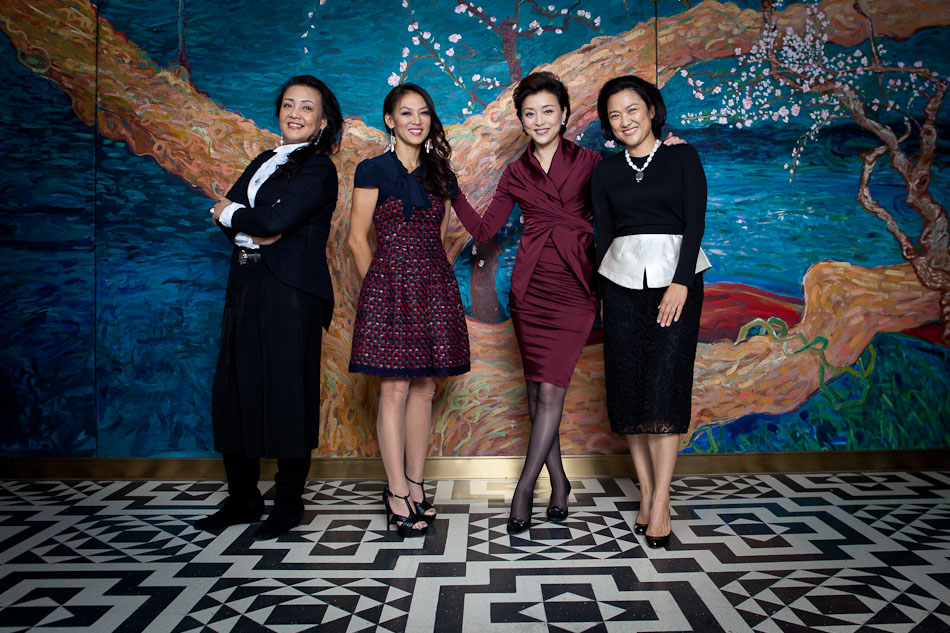
Apr 6, 2012 | Clippings, Consumerism, Counterfeit Paradises, Development, Society
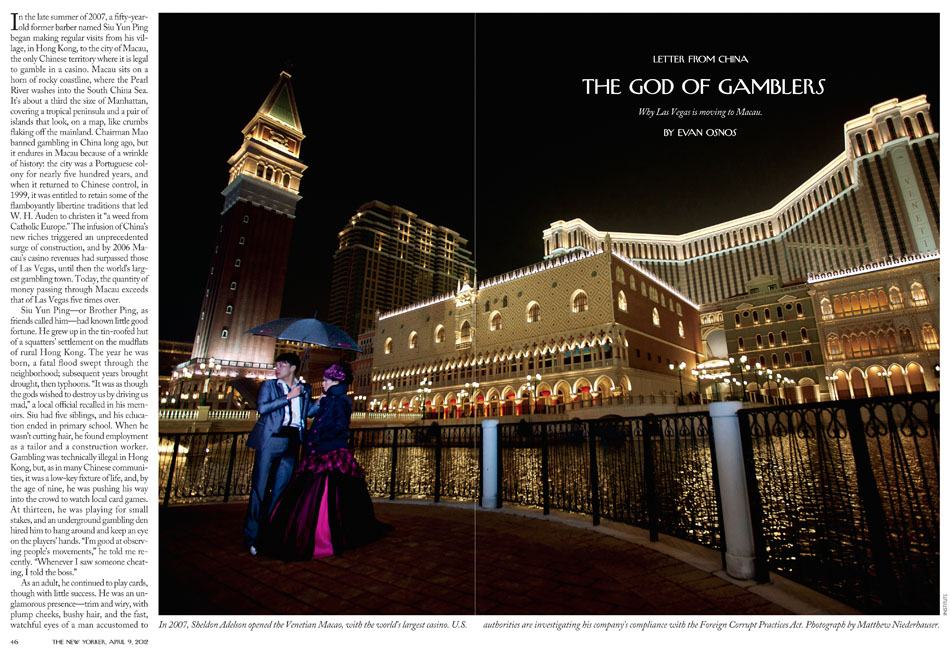
Macau looms large on the iniquitous edges of Asia. It is a city of sin: filled with casinos, prostitutes and any other vice or luxury one could imagine. In many ways this is business as usual. Trafficking of women and general skullduggery date back to the earliest days of the Portuguese colony at the turn of the 16th century. Now the stakes are much higher though, and for many visitors, money is not an object. Macau currently draws the biggest “whales” in the world and most of these high rollers come straight out of mainland China. The increase in gambling revenues in Macau is unprecedented. Galaxy Entertainment tripled its profits during 2011, and the entire casino industry is already up 20% in the first quarter of this year compared to last. Macau outperforms the Las Vegas Strip nearly six times over and there is no end in sight.
The already outrageous revenues posted by Macau casinos also appear to be the tip of the iceberg. It is largely acknowledged that a massive amount of cash moves through V.I.P. gambling rooms where high-stake bets are off the books. No one knows how deep that well goes. Money laundering and connections to triads run rampant through the “junkets” who shuttle wealthy mainland Chinese gamblers into Macau and collect their debts elsewhere in order to bypass currency limitations at the border. Macau is riding the tails of China’s economic boom and catering to the extravagant tastes of the Chinese nouveau riche looking to flex their often illicit financial muscles.
At the top of the pyramid are two of the world’s richest men: Steve Wynn and Sheldon Adelson (also the largest contributor to Newt Gingrich’s campaign efforts). Both are in heated competition to rule Macau as their fortunes continue to skyrocket despite serious allegations of corruption and a spotty track record. A WikiLeaks spinoff called CasinoLeaks – Macau offers up condemning fare based on collected public records. Be sure to read Evan Osnos’ article in The New Yorker that features my photography. He does an amazing job navigating this intricate web of sordidness. More photographs that didn’t make the cut can be seen below.
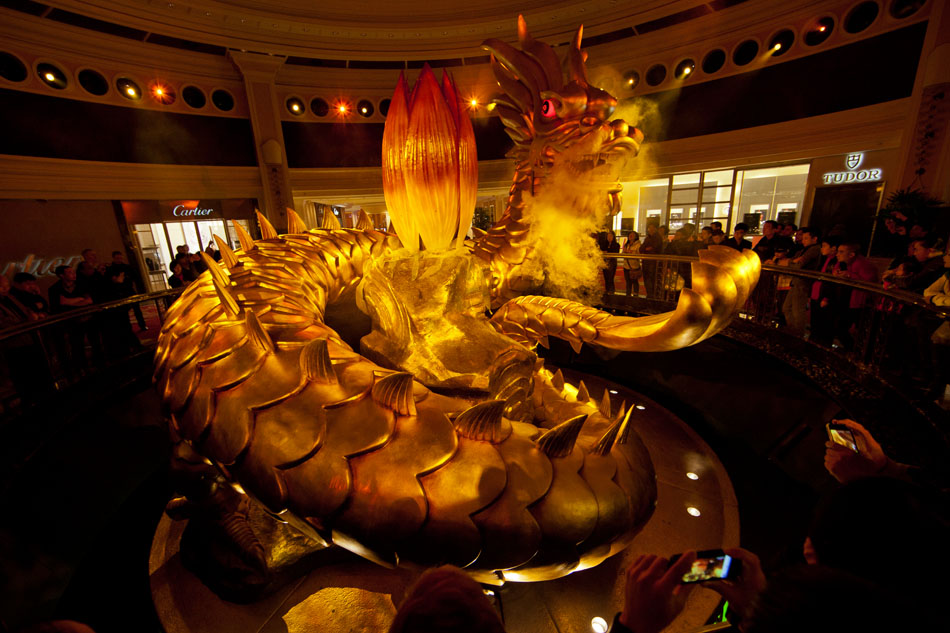

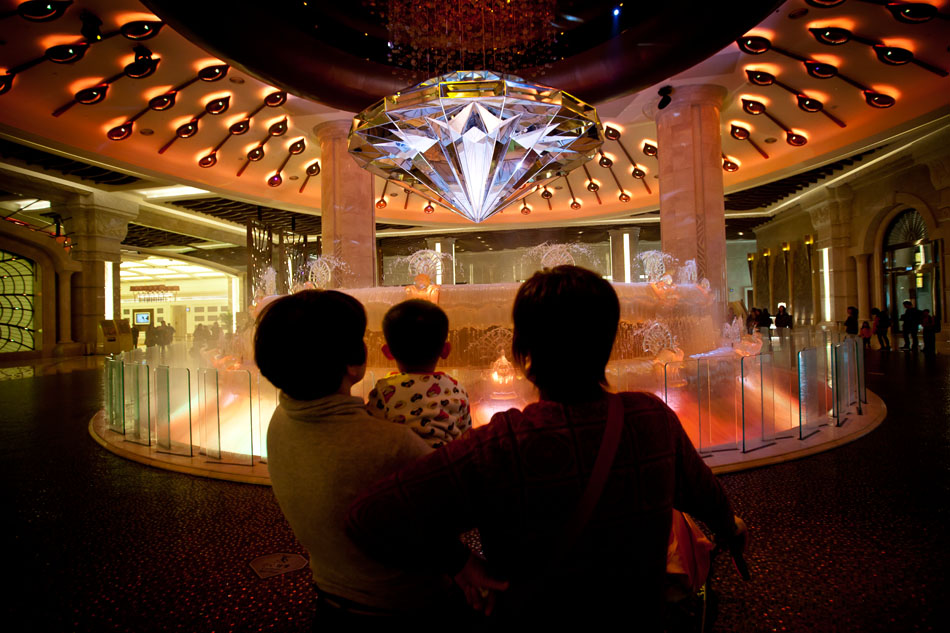
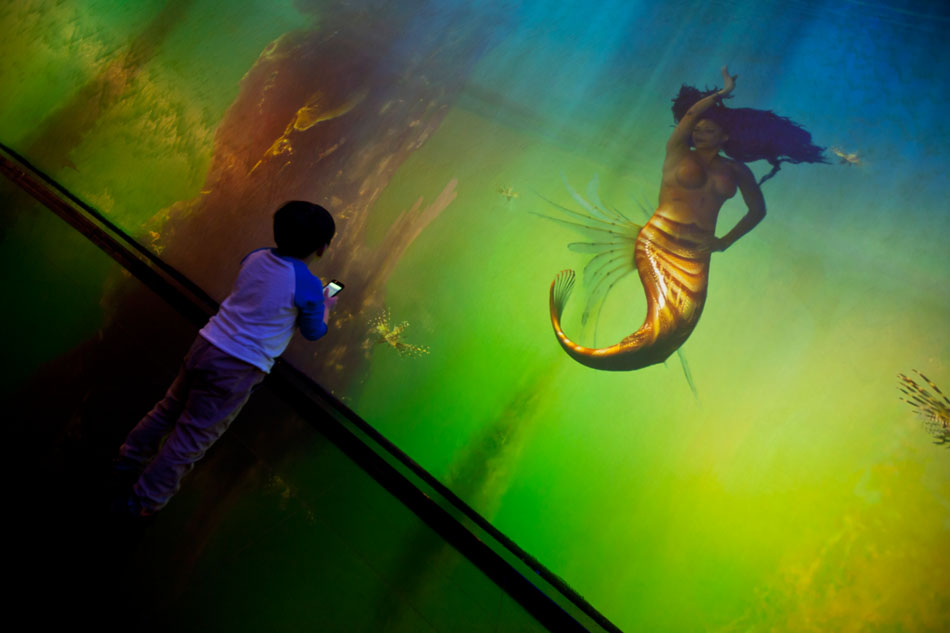
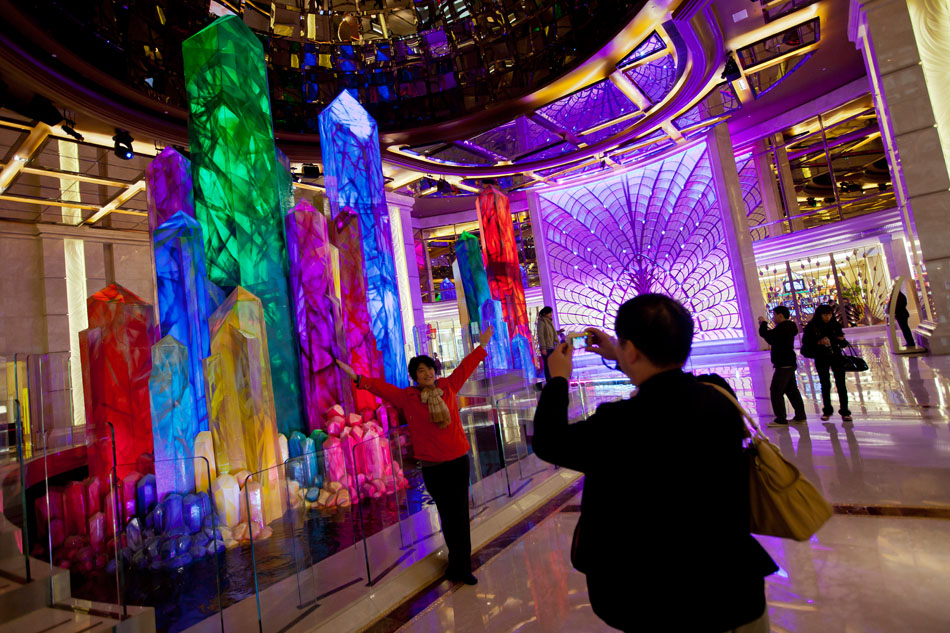

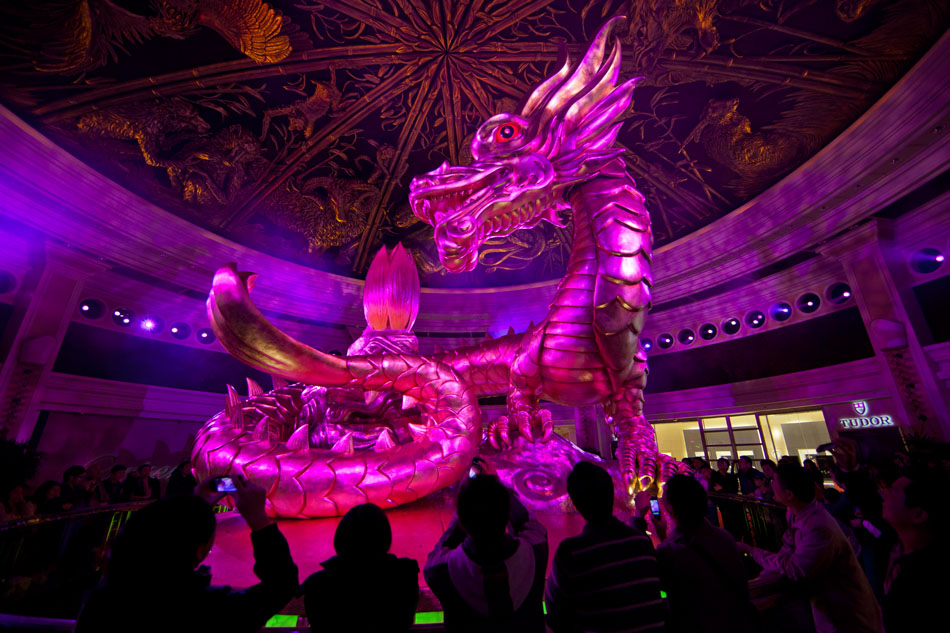


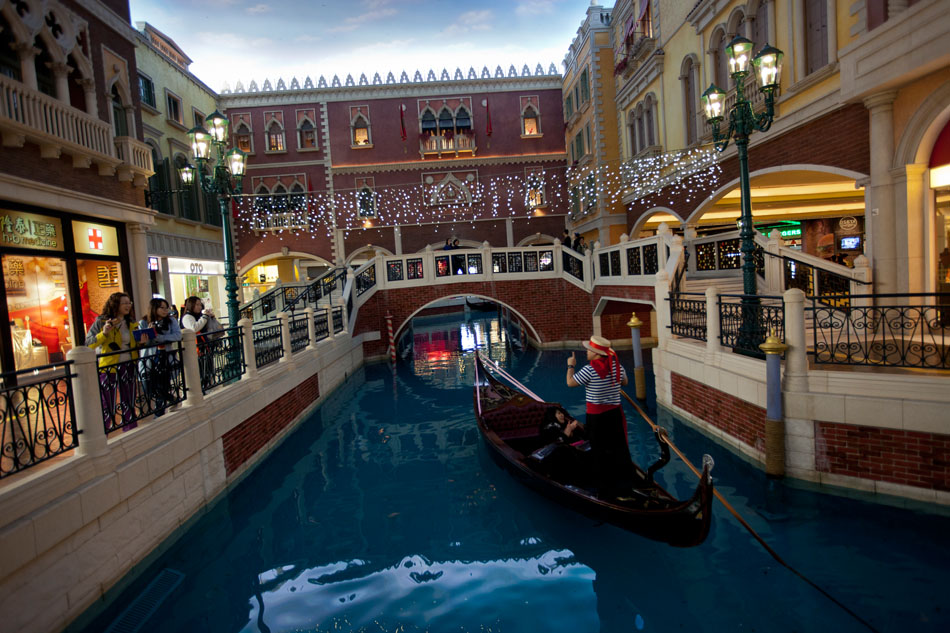

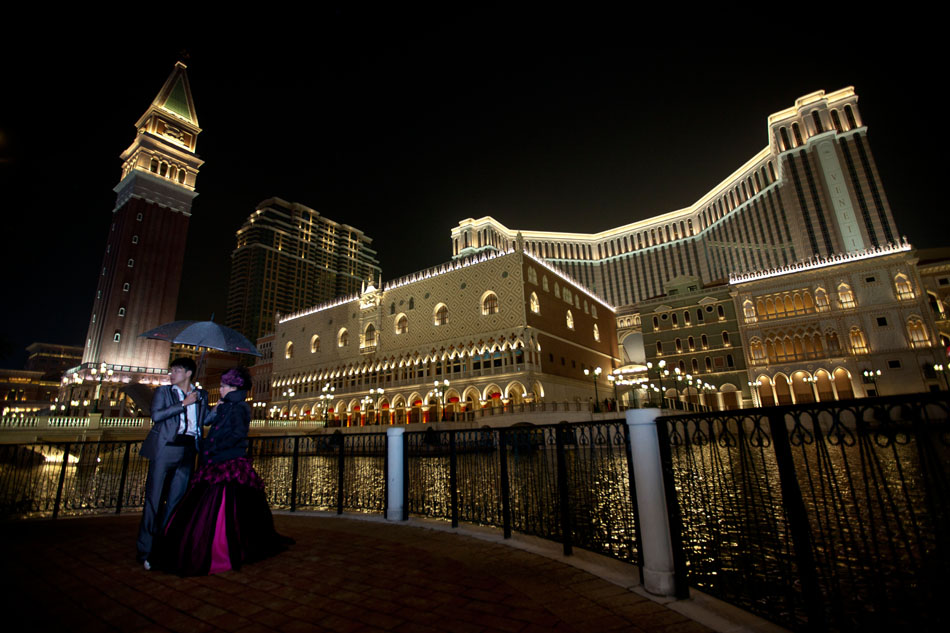
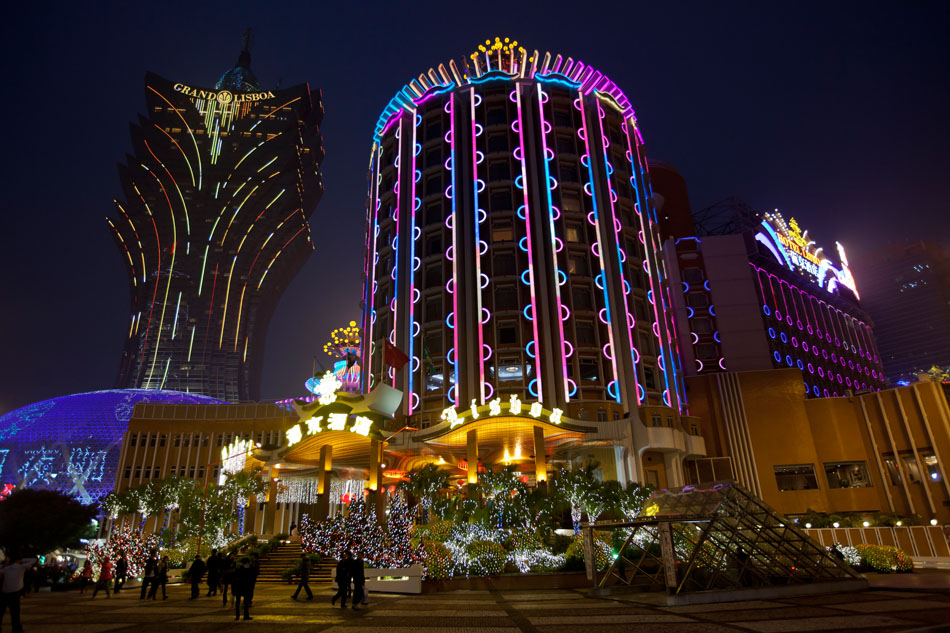
Mar 13, 2012 | Architecture, Clippings
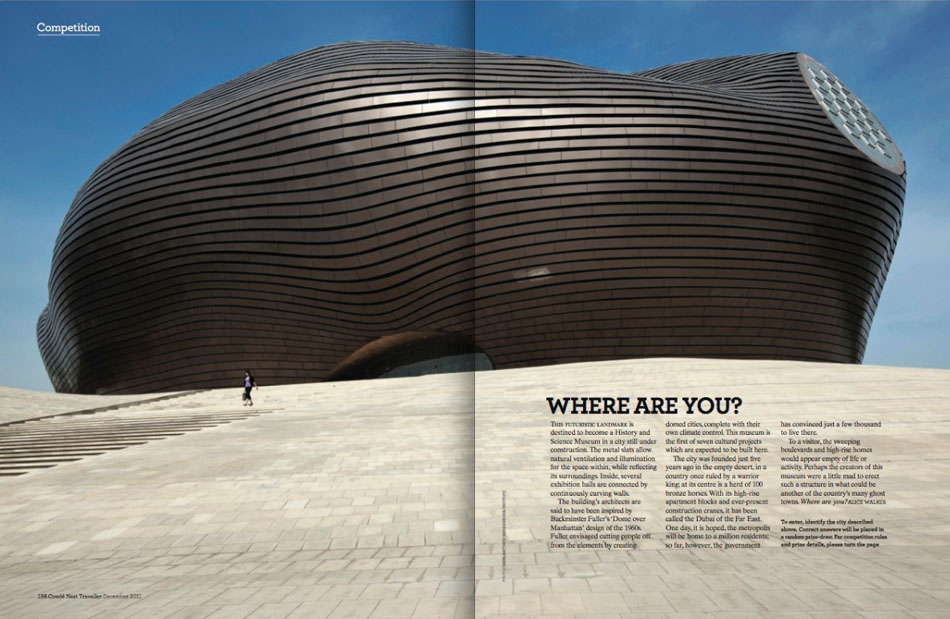
One of my photographs from the amazingly ridiculous Kangbashi district in Ordos was featured in Conde Nast Traveler this past month. The building shown is the Ordos Museum designed by MAD architects, one of the preeminent Chinese architecture firms founded by Ma Yansong who previously toiled as a project designer for Zaha Hadid Architects. The building itself remains a wonder to behold as its irregular shape clashes with the geometrical grid that binds the rest of the newfangled district. Whether or not it will see any use is the real question now that it finally opened. The municipal government can barely get people to stay put in the Kangbashi residential developments, let alone consistently fill up over 40,000 square meters of exhibition space. The flagship cultural center of Ordos will probably accumulate more sand from the Gobi desert than actual visitors. Anyway, I will be featuring more photographs of MAD buildings in the near future thanks to my first assignment with The New York Times Magazine. In the meantime, you can check out some extra photographs I took of the unfinished interior.
